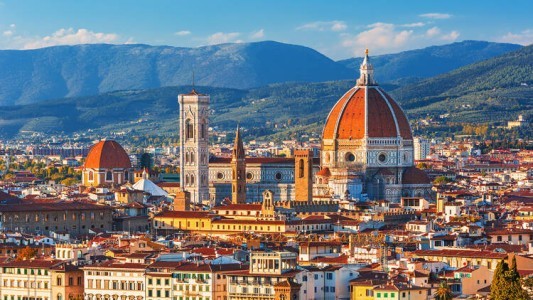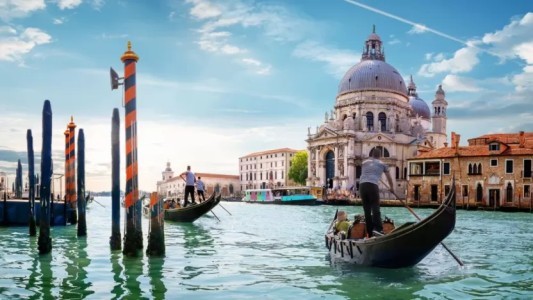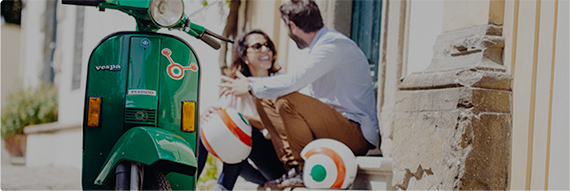Tuscan Food: Staple Foods

Where would Tuscans be without bread, olive oil and beans, the foods that nourished centuries worth of geniuses?
Bread
Tuscan bread has one main defining characteristic: it is bland. Made without salt for centuries, this tradition goes back to the Middle Ages and essentially has its roots in poverty, when the cost and tax on salt was so high that the proud Florentines simply omitted it from their daily bread recipes. Traditionally baked in a wood-fired oven, the bread can take some time to get used to for those unfamiliar with it, but one taste of the local, salty and rich accompaniments and you will soon see why there is no need for salt in the bread. A little dribble of extra virgin olive oil will convert most people or use it as a scarpetta to mop up pasta sauce from your plate.
This typical regional bread has a shorter shelf life than salted bread therefore it is bought daily and in quantities to suit. In a bakery, bread is sold by weight so you will see people order a half loaf or even a couple of slices. Many traditional recipes have evolved that make use of day-old bread. Perhaps the best known is ribollita, a bean and vegetable stew thickened with bread, or pappa al pomodoro, a thick tomato and bread mixture somewhere between a stew and a soup.
Amongst theantipasti choices on a menu, look for fettunta, a toasted slice of Tuscan bread rubbed with garlic, brushed with extra virgin olive oil and sprinkled with salt. In the summer when tomatoes are at their best, try bruschetta al pomodoro, a slice of Tuscan bread with fresh chopped tomatoes, basil and olive oil.
Types of bread
At a bread shop if you ask for bread, pane, it will be unsalted, local pane toscano. Ask for pane salato if you prefer bread made with salt and pane integrale for wholemeal.
Focaccia is bread that has had the air pushed out of it before baking, so it is only a centimetre or two high, often cut through horizontally and filled with salumi or cheese and baked. Schiacciata is the Tuscan version, brushed with olive oil and sprinkled with salt.
Covaccino is a wafer thin version of schiacciata baked in a wood oven, brushed with oil and salt and eaten with antipasti.
Ciabatta is a slightly sour tasting crusty bread made with a fermented starter dough and in the characteristic shape of an old slipper, hence its name.
Olive oil
Tuscany is one of the world's largest and most important producers of olive oil. Runner-up to Puglia in terms of quantity of olive oil production, Tuscany has arguably the best quality oil in the Mediterranean, and has been producing it since the Middle Ages. With the best oil coming from autumn's hand-picked olive groves around Florence and Siena from trees that can be 600 years old, it is no wonder that the locals consume more olive oil than anyone else on the planet – around 12 litres per person a year.
The versatile oil is used for cooking, as a condiment at the table, or for preserving vegetables and herbs. As you would imagine, the flavours and qualities vary considerably depending on olive tree variety, local climate, soil, when it was harvested and how it was made. Extra virgin olive oil is bright green, with a bit of a bite to it and is made from the first pressing, simply by crushing olives and collecting the oil released by them. As it is cold-pressed, it retains the vitamins and minerals that make it so prized for its health benefits, not to mention its flavour. After pressing the olives to obtain this prized extra virgin oil, the crushed olives can be heated or centrifuged to release more oil but it is of lower quality, more suited to use in the kitchen.
Farro
Variously translated as spelt, buckwheat, barley and emmer wheat, the ancient cereal farro has been grown in this area since Etruscan times. After losing popularity for a period, farro is making a comeback especially as an alternative for those with an intolerance to wheat. An important ingredient for many soups, it is also eaten similarly to rice as a first course, dressed with meat or vegetables. High in gluten, flour made from farro is excellent for bread and pasta. Mixed with chopped fresh tomatoes and grilled vegetables, the protein rich boiled whole grains are served cold in summer as a light salad. The nourishing young sprouts of farro can also be used to add a nutty flavour to salads.
The most famous region for farro is that of the Garfagnana, the mountainous region north of Lucca, that has attained the status of IGP (Protected Geographical Indication). This precious little grain packs a punch in terms of nutrition: it is the least calorific of cereals, low in fat, high in fibre, vitamins and minerals.
Fagioli
Tuscans love beans – as a side dish, with pasta, in a soup, as a puree, whether they are green, white, Borlotti or fava, beans are a staple in the diet of Tuscany, so much so that Tuscans are referred to by other Italians as mangiafagioli or “Bean Eaters.”
Dried beans need to be soaked in water overnight, then cooked gently for a long time to soften them. A popular way to do this long slow cooking was to remove the straw from a Chianti wine bottle, half fill it with beans and water, season them with garlic, olive oil, sage leaves, salt and pepper, and then leave the fiasco or flask propped up in a pile of ash in front of the fire for several hours.
Look out for fagioli all'uccelletto, white cannellini beans cooked long and slow with garlic and tomatoes, popular as a side dish to Bistecca Fiorentina, Florentine steak. As steam escapes from the covered pot during cooking, a chirping sound like a little bird or uccelletto is heard.
In the summer, a popular salad is made with tuna and white beans with finely chopped raw onion and plenty of good olive oil, called tonno e fagioli. A warming winter dish of fat, Tuscan pork sausages braised with white beans and sage leaves, called salsiccia e fagioli is widely available in traditional restaurants.
You may also find pasta e fagioli on the menu among the first courses. There are many ways to serve these two favourite ingredients, often it will be a satisfyingly comforting soup of puréed beans with short pasta cooked in it, and should be served with a generous swirl of good extra virgin olive oil on the top.







